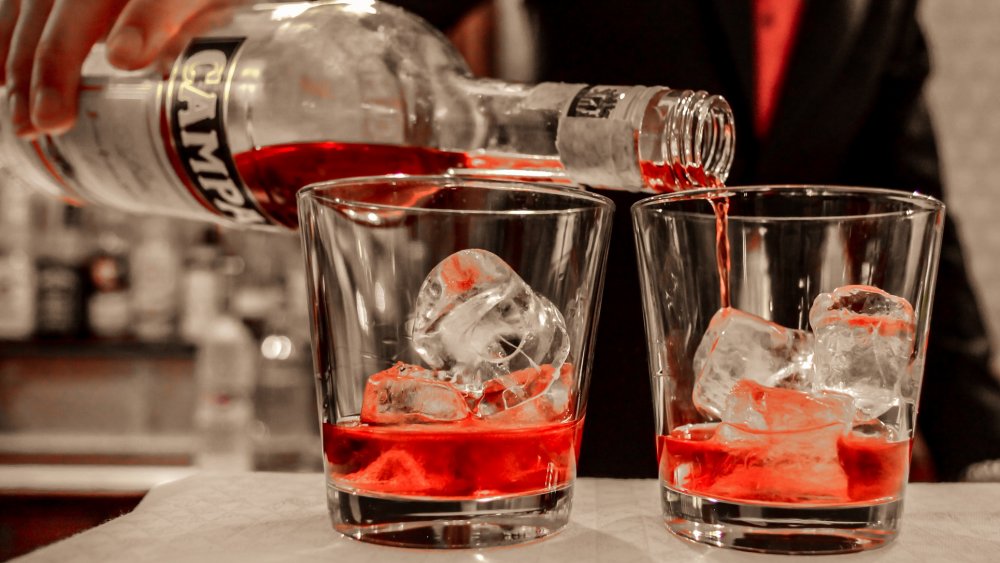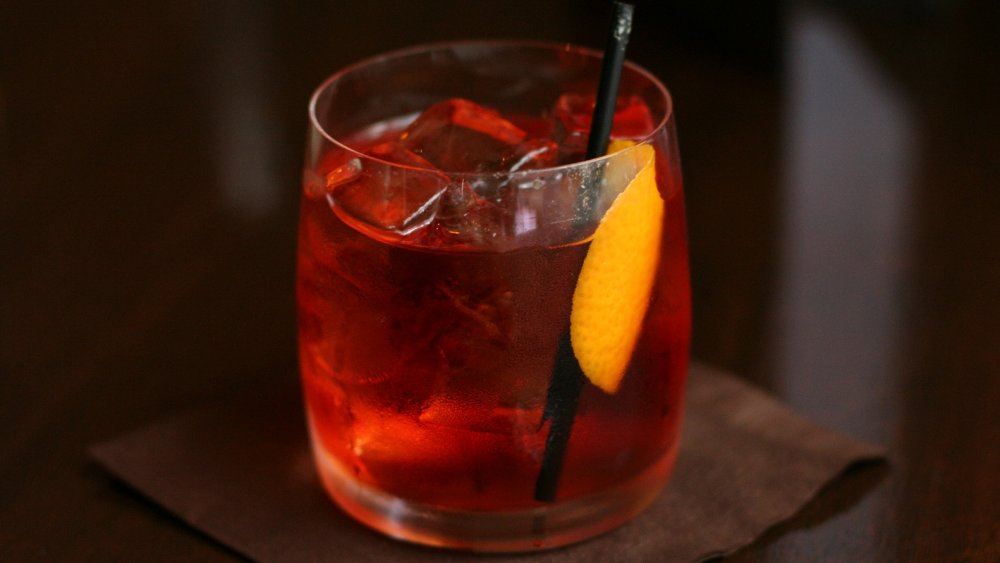This Is The Only Living Person Who Knows The Recipe For Campari
Ohhh Campari: that liqueur you've walked by in the supermarket and recognize by name only, or else have had "with soda." Or perhaps you've pretended to like it at a full-costume speakeasy while your mouth constricts and tells you to go back to your gin-and-tonics, or for the feebler, white russians.
Campari is definitely an acquired taste. The unusual liqueur has been around since 1860, when Milan-based café owner Gaspare Campari bottled some of the stuff in his basement, as recounted by Saveur. Its candied vermilion hue, spiced yet bitter taste retains a refined, unique quality that beckons the drinker to challenge their senses and heighten the depths of their alcoholic appreciation. Or, you know, something like that.
At the time of the liqueur's creation, Campari himself was experimenting with all sorts of whacko combinations of herbs, ingredients, juices, whatever. He landed some sort of mad scientist's hit with the beverage Campari, which in 2019 sold 3.4 million 9-liter cases worldwide, per Statista. Since its creation, the "bitter" has carved out its place as a pre-dinner aperitivo, and spawned classic cocktails such as the Negroni, invented in 1920 in Florence, which includes the equally Italian and famed Prosecco, sweet vermouth, and an orange twist, all over ice. Aside from a shift away from insect-derived cochineal dye in 2006, as described on Punch, the recipe for Campari has apparently remained exactly the same since its inception, and at present, only one person alive knows it.
Not the Colonel's mysterious blend of herbs and spices
We know the basics about what comprises Campari: alcohol (of course), sugar syrup, distilled water, and an infusion of oranges, rhubarb, ginseng (of all things), and some secret mixture of herbs. Only the factory director at the main bottling planet in Sesto S. Giovanni, north of Milan, knows the precise combination of nameless herbs. The details of his ultra-covert knowledge constitute some truly cloak-and-dagger stuff. The herbs, it seems, are delivered to his office directly, wrapped in plain brown paper. No one else even sees the packages, and no one else has any idea what's inside, not even the company executives. If something happens to the director, there's some kind of clandestine method of transmitting the recipe to the next director. As for how the director then passes the ingredients along the factory floor? Another mystery.
We know part the Campari-making process, though. In a feat of chemistry and creativity, the dry ingredients are soaked in water for two days, mixed with alcohol and more water, steeped for 15 days (exactly), drained into tanks, pressed for juice, and the dregs are distilled for more alcohol before the rest of the ingredients are added to the main, dark liquid. Eventually, different proofs are shipped off to different markets, such as the U.S. (48 proof, at 24 percent) and Europe (57 proof, at 28.5 percent).
In the end, such precision makes Mr. Campari's original basement brew a secret worth keeping.

